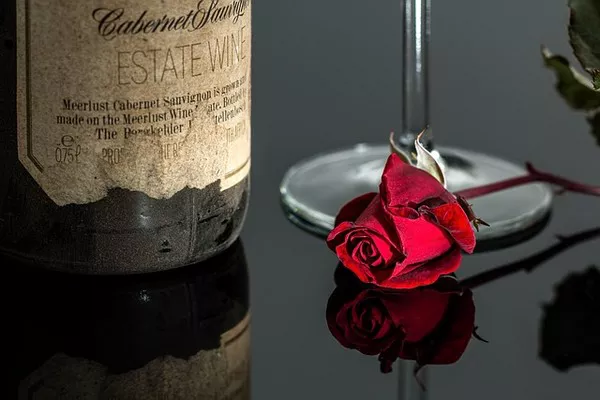Weddings are not just ceremonies; they are moments of profound emotions and meaningful connections. Flowers play an integral role in weddings, symbolizing love, purity, and beauty. Pressing wedding flowers is a wonderful way to preserve these sentimental blooms and create lasting memories. In this guide, we will explore the art of pressing flowers, step by step, to ensure that your cherished blossoms remain intact for years to come.
The Art of Pressing Wedding Flowers
Pressing flowers is an age-old technique that involves drying flowers while retaining their shape, color, and vibrancy. By pressing wedding flowers, you can encapsulate the charm of the special day and transform them into timeless keepsakes. Here’s a comprehensive guide to help you preserve your wedding flowers successfully:
Materials You’ll Need:
Fresh Flowers: Choose flowers that are at their peak, free from any blemishes or damage. Popular choices include roses, daisies, pansies, and baby’s breath.
Absorbent Paper: Acid-free blotting paper or parchment paper is essential for absorbing moisture from the flowers without causing discoloration.
Heavy Books or Flower Press: To create uniform pressure and promote efficient drying, you’ll need heavy books or a dedicated flower press.
Tweezers: Delicately handle the flowers with tweezers to avoid damaging their fragile petals.
Microwave Press (Optional): A microwave press can expedite the drying process, but caution is needed to prevent overheating.
Step-by-Step Process:
Prepare the Flowers: Choose flowers that are in their prime and have not yet fully bloomed. It’s best to select flowers just before they reach full maturity for optimal color retention. Trim excess leaves and stems to minimize moisture content.
Choose a Pressing Technique: There are several methods for pressing flowers, but the most common are the traditional book press and the microwave press. Choose the method that best suits your preferences and resources.
Book Pressing: Place the flowers between layers of absorbent paper within the pages of a heavy book. Make sure to space the flowers apart to prevent overlap.
Microwave Pressing: Place the flowers between two sheets of absorbent paper and microwave them in short bursts, checking regularly to prevent overheating.
Positioning the Flowers: Arrange the flowers face down between layers of absorbent paper. Ensure they are evenly spaced and not touching to prevent sticking or color transfer.
Pressing Process: If using a book press, gently close the book, placing additional weight on top if necessary. For a microwave press, use a microwave-safe container and follow manufacturer instructions for microwaving duration.
Drying Time: The drying process can take anywhere from a few days to a few weeks, depending on the flowers’ moisture content and the pressing method used. Check the flowers regularly for progress.
Finishing Touches: Once the flowers are fully dried and flattened, carefully remove them from the absorbent paper using tweezers. Handle them gently to avoid damaging delicate petals.
Display Options: Pressed flowers can be framed, incorporated into scrapbooks, used in handmade cards, or even used to create stunning botanical art pieces. Frame them behind UV-protective glass to prevent fading over time.
Tips for Success:
Choose the Right Flowers: Not all flowers are suitable for pressing. Experiment with different varieties to find the ones that press well and retain their color.
Avoid High Moisture Content: Flowers with high moisture content can lead to mold growth during the pressing process. Allow flowers to air dry for a day before pressing.
Use Acid-Free Materials: Acid-free absorbent paper and materials will prevent discoloration and preserve the flowers’ vibrancy.
Patience is Key: Rushing the pressing process can lead to subpar results. Be patient and let nature take its course.
Test Microwave Times: If using a microwave press, start with short bursts of time to prevent over-drying or scorching the flowers.
FAQs about Pressing Wedding Flowers:
Q1: Can I press any type of flower from my wedding bouquet?
A1: While most flowers can be pressed, some may not retain their color or shape well. It’s recommended to experiment with a few flowers from your bouquet before pressing the entire arrangement.
Q2: How can I prevent pressed flowers from fading over time?
A2: To prevent fading, frame pressed flowers behind UV-protective glass. Display them away from direct sunlight and humidity to ensure their longevity.
Q3: Can I press flowers that have sentimental value, like corsages or boutonnieres?
A3: Absolutely. Pressing these smaller floral pieces can be a beautiful way to cherish those special memories.
Q4: What if my pressed flowers develop mold?
A4: Mold can develop if flowers have excess moisture when pressed. Ensure the flowers are fully dry before pressing, and avoid pressing flowers with very high moisture content.
Q5: Are there any alternatives to traditional pressing methods?
A5: Yes, you can explore other methods like air-drying, silica gel drying, or using a flower press machine. Each method has its own advantages and considerations.
Preserve Your Wedding’s Floral Elegance
Pressing wedding flowers offers a way to capture the essence of your special day in a timeless and artistic manner. By following this comprehensive guide and being mindful of the tips provided, you can create stunning pressed flower keepsakes that will become cherished mementos for years to come. Whether displayed in your home or given as heartfelt gifts, your pressed wedding flowers will continue to evoke the joy and beauty of your wedding day.


